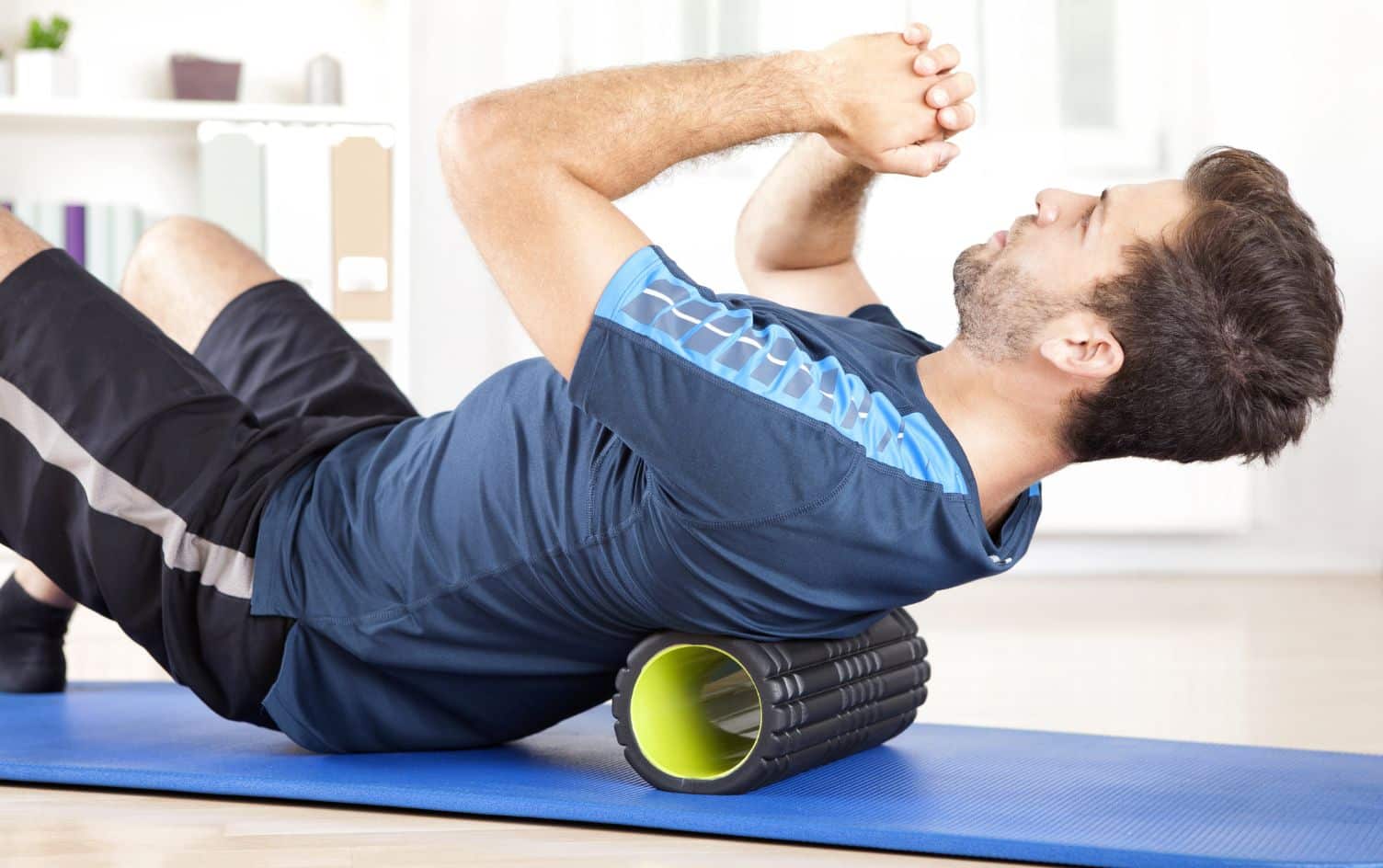Foam rolling has become increasingly popular for improving mobility, preventing injury, boosting performance and helping you recover from exercise. Tightness and adhesions (or “knots”) in your body’s tissue are a natural response to exercise, injury and lifestyle.
Foam rolling is a form of self-myofascial release: a stretching technique for treating muscle stiffness and pain. It improves the gliding of the body’s structures, including skin, fat and muscle fascia.

“There are hundreds of foam rollers on the market, and choosing the appropriate length, texture and firmness can be difficult,” says Kate Ligler a certified trainer and wellness manager at MINDBODY. “Remember to start with a softer roller and apply pressure slowly to introduce your tissue to deep tissue massage.” Generally, longer rollers are more versatile for your total body, but they’re difficult to transport.

If you have a painful knot in your quadricep, mashing that overstressed tissue with a foam roller only further aggravates and potentially causes more damage to it. Instead, gently foam roll above and below the knot all the way to the insertion point at the surrounding joints. Releasing pressure around the area helps aid the stressed tissue.

You might be a little sore your first few times and topping off hydration levels helps flush your system — ultimately aiding in recovery. “The pressure of the roller improves your circulation by stimulating blood flow to your soft tissues, and just like any type of massage, sports-related or not, this will leave you less hydrated than when you began,” says Anthony Chavez, CorePower Yoga director of personal transformation and mindful leadership. Most of the time we roll before or after a workout, so the need to stay hydrated is heightened. As a very general guideline, drink an additional 20 ounces of water when rolling.

If discomfort or tightness appears repeatedly, you need to work on another link in your kinetic chain (neighboring or synergistic muscle), which might be causing the actual problem. Vary your foam-roller patterns and routines to create better balance across all your systems.

“Foam rolling pre-workout will give additional pliability to muscles and help prevent injury,” says Alex Robinson, a Flywheel instructor. “This will also increase the quality of your workout as it will help you achieve an increased range of motion — something that your physique will thank you for by increasing your lean muscle.”

“Many athletes will try to address knee and thigh pain, or general flexibility issues, by foam rolling their IT band,” says Robinson. “The IT band, or iliotibial band, is a multipurpose tendon that runs down the outer thigh. It can become aggravated and inflamed by repetitive motions such as running and cycling.” You don’t want to foam roll the actual IT band. The IT band is not a muscle and you’re not actually breaking up knots or adhesions: At worst, you may aggravate the injury by further stressing on the micro tears and damage. The thick fascial tissue will be painful to roll on but won’t actually have any benefit. Instead, roll the major muscles around the IT band, specifically the quads, hamstrings, calves and glutes.





4 Responses
Your article states that you don’t use the foam roller on your IT band, yet your picture shows that that is exactly what she’s doing. So what gives? Do I or don’t I use it on my IT band.
And also, how do you properly treat your IT band soreness?
I think they chose that picture because it is a popular method. Maybe they were thinking that when people see that affiliated with the title of the article, it might be more enticing for them to click/open it and read since they’ve probably most likely rolled their IT before. They want to see if it’s a “do” or “don’t”.
I came to this conclusion because they also didn’t place the pic with one of the “do’s” or “don’ts”, its just at the top. 😛
To treat IT soreness, they said to “Instead, roll the major muscles around the IT band, specifically the quads, hamstrings, calves and glutes”.
I don’t work for the app or anything, but I hope that helps! 😀
Thank you for this – I’ve been enjoying the benefits of foam rolling lately, but this helped to clarify some things for me! Will definitely take it easy on the IT band from now on 🙂
Foam rolling really helps for me everyday, I do it before starting my day just sitting on it and slowly rocking back and forth until i lay my back on it gently and just stretching while on it, it really kick start your day but at night time before i go to bed, i use this Acupressure mat for up to 15 minutes before sleeping to heal and recover my body for the soreness of the day so I can enjoy my sleep.